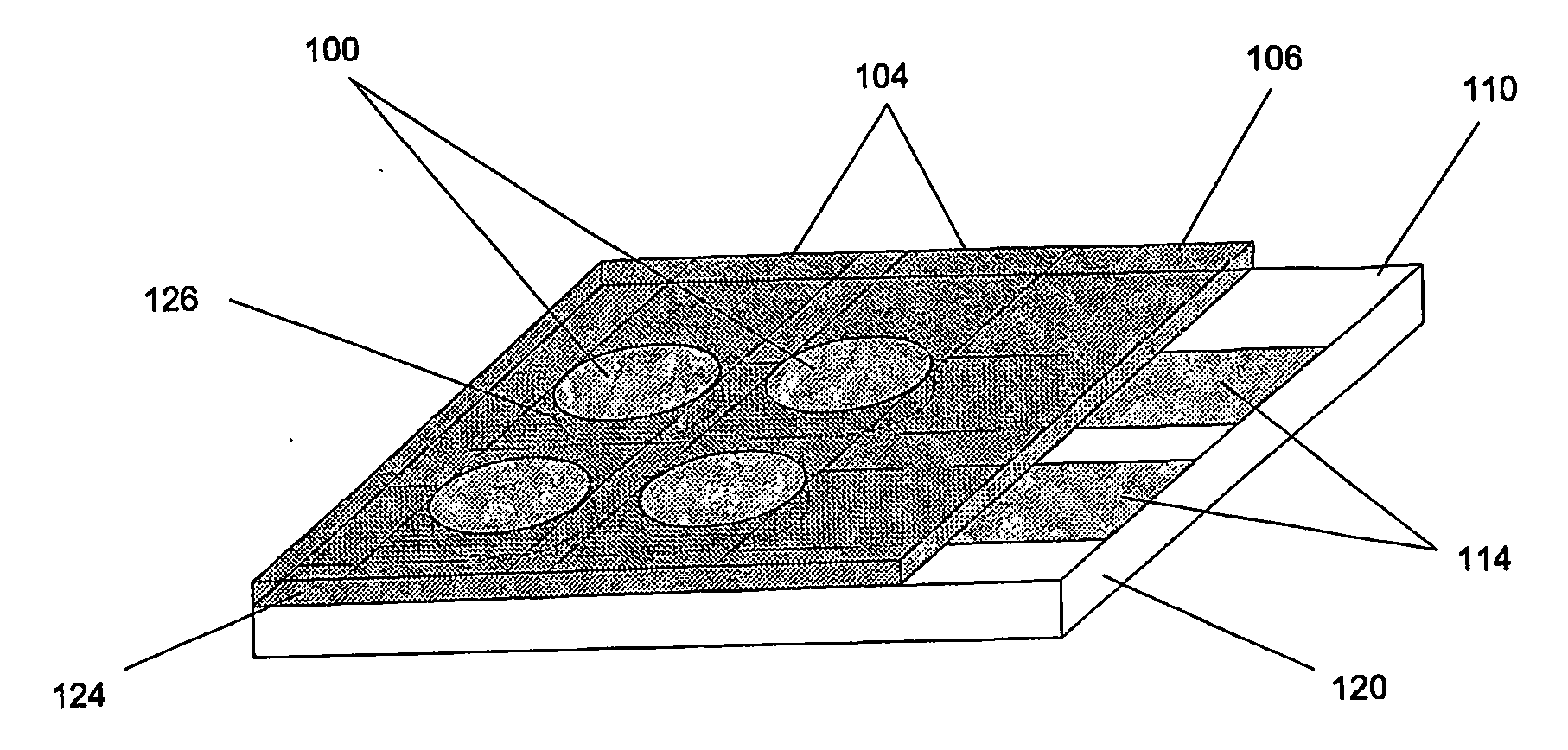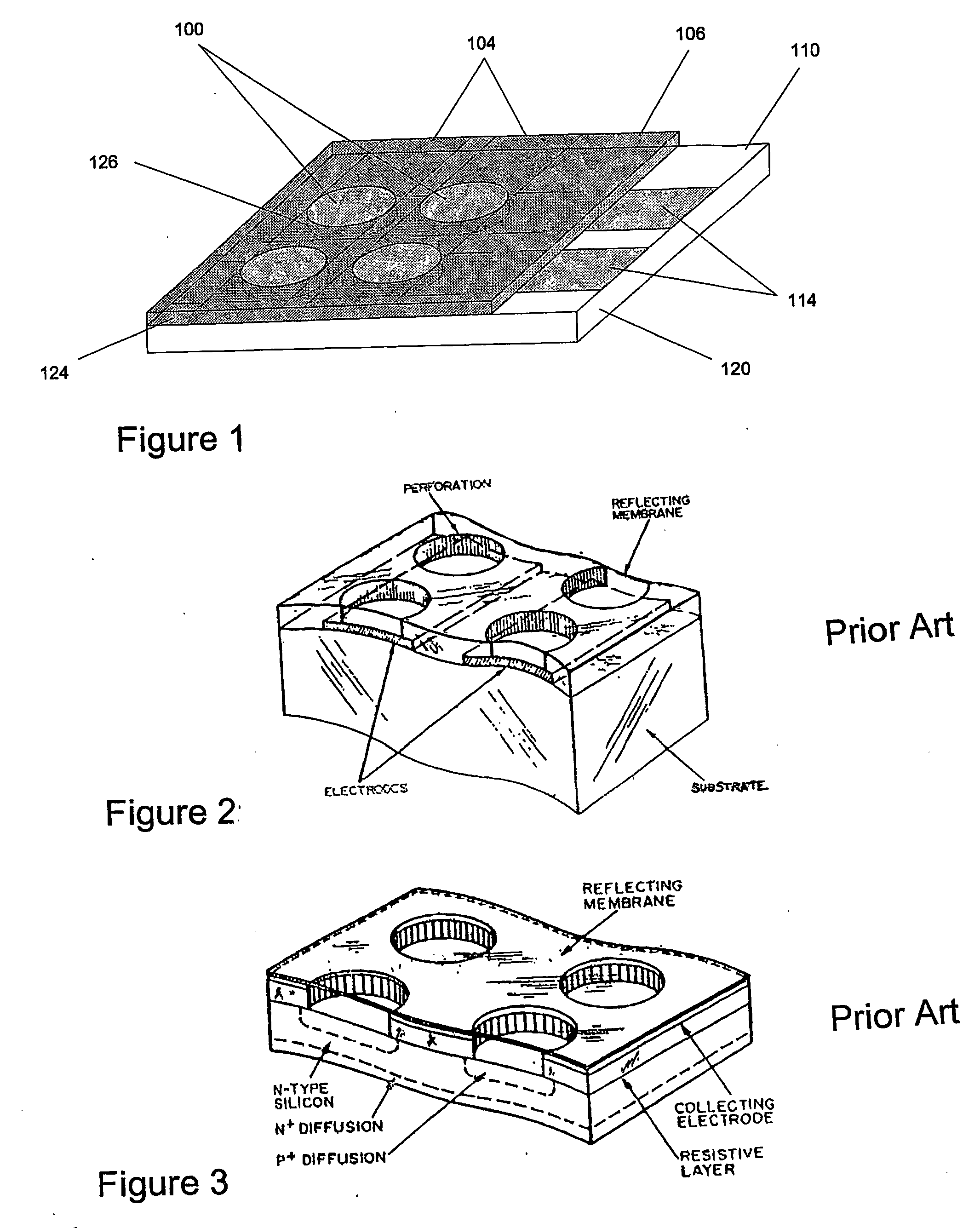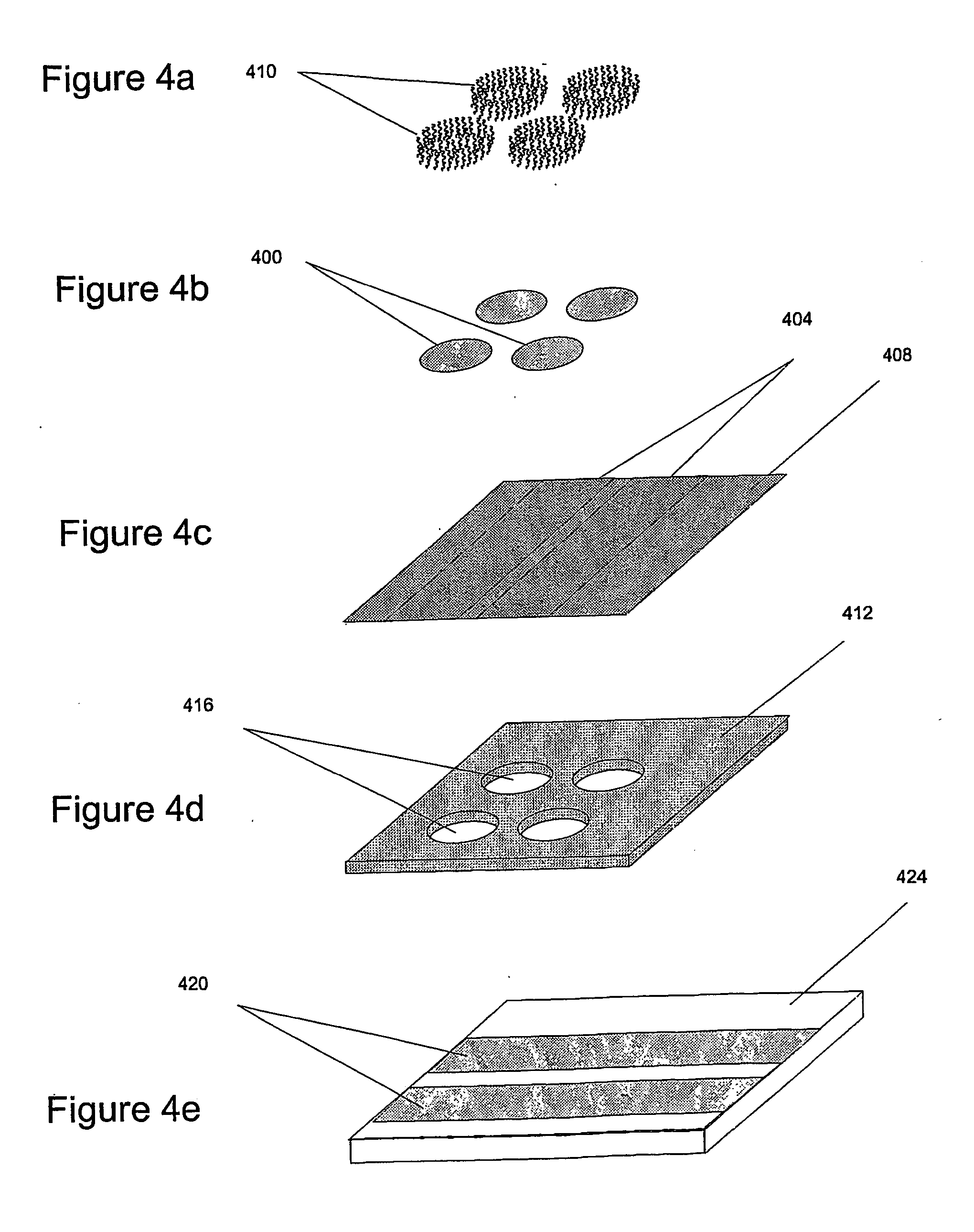Manufacturing method and readout system for biopolymer arrays
a biopolymer array and readout system technology, applied in the direction of burettes/pipettes, sequential/parallax process reactions, library creation, etc., can solve the problems of inherently long and expensive methods, dna arrays (either on silicon, glass or plastic) can cost as much as $1200 each, and fluorescence analyzers are expensiv
- Summary
- Abstract
- Description
- Claims
- Application Information
AI Technical Summary
Benefits of technology
Problems solved by technology
Method used
Image
Examples
Embodiment Construction
[0051] The present invention has two important aspects: First, providing a simple way (Hybridization Transfer Printing) to eliminate the many steps involved in building a DNA, antibody, antigen or microbe array; and a simple electrically-driven sensor array to detect the presence of complementary hybridization to 30 individual elements in the array. The invention uses essentially the same techniques to produce and analyze DNA arrays, microbe arrays, antibody arrays and antigen arrays. By greatly reducing the number of steps to manufacture arrays for specific hybridization and providing a simple and easily manufacturable sensor array, the present invention solves the problems of cost and complexity in DNA chip manufacture and opens a host of new practical applications for hybridization arrays. The second general aspect is a Tympanic Sensor Array that allows electronic detection of multiple binding events occurring on an array.
I. Hybridization Transfer Printing
[0052] The inventive ...
PUM
| Property | Measurement | Unit |
|---|---|---|
| resonant frequency | aaaaa | aaaaa |
| thickness | aaaaa | aaaaa |
| mass | aaaaa | aaaaa |
Abstract
Description
Claims
Application Information
 Login to View More
Login to View More - R&D
- Intellectual Property
- Life Sciences
- Materials
- Tech Scout
- Unparalleled Data Quality
- Higher Quality Content
- 60% Fewer Hallucinations
Browse by: Latest US Patents, China's latest patents, Technical Efficacy Thesaurus, Application Domain, Technology Topic, Popular Technical Reports.
© 2025 PatSnap. All rights reserved.Legal|Privacy policy|Modern Slavery Act Transparency Statement|Sitemap|About US| Contact US: help@patsnap.com



